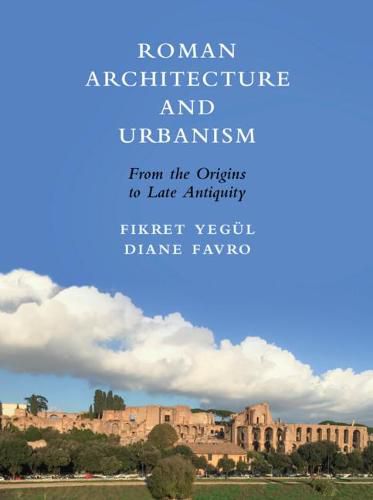Readings Newsletter
Become a Readings Member to make your shopping experience even easier.
Sign in or sign up for free!
You’re not far away from qualifying for FREE standard shipping within Australia
You’ve qualified for FREE standard shipping within Australia
The cart is loading…






Since antiquity, Roman architecture and planning have inspired architects and designers. In this volume, Diane Favro and Fikret Yegul offer a comprehensive history and analysis of the Roman built environment, emphasizing design and planning aspects of buildings and streetscapes. They explore the dynamic evolution and dissemination of architectural ideas, showing how local influences and technologies were incorporated across the vast Roman territory. They also consider how Roman construction and engineering expertise, as well as logistical proficiency, contributed to the making of bold and exceptional spaces and forms. Based on decades of first-hand examinations of ancient sites throughout the Roman world, from Britain to Syria, the authors give close accounts of many sites no longer extant or accessible. Written in a lively and accessible manner, Roman Architecture and Urbanism affirms the enduring attractions of Roman buildings and environments and their relevance to a global view of architecture. It will appeal to readers interested in the classical world and the history of architecture and urban design, as well as wide range of academic fields. With 835 illustrations including numerous new plans and drawings as well as digital renderings.
$9.00 standard shipping within Australia
FREE standard shipping within Australia for orders over $100.00
Express & International shipping calculated at checkout
Stock availability can be subject to change without notice. We recommend calling the shop or contacting our online team to check availability of low stock items. Please see our Shopping Online page for more details.
Since antiquity, Roman architecture and planning have inspired architects and designers. In this volume, Diane Favro and Fikret Yegul offer a comprehensive history and analysis of the Roman built environment, emphasizing design and planning aspects of buildings and streetscapes. They explore the dynamic evolution and dissemination of architectural ideas, showing how local influences and technologies were incorporated across the vast Roman territory. They also consider how Roman construction and engineering expertise, as well as logistical proficiency, contributed to the making of bold and exceptional spaces and forms. Based on decades of first-hand examinations of ancient sites throughout the Roman world, from Britain to Syria, the authors give close accounts of many sites no longer extant or accessible. Written in a lively and accessible manner, Roman Architecture and Urbanism affirms the enduring attractions of Roman buildings and environments and their relevance to a global view of architecture. It will appeal to readers interested in the classical world and the history of architecture and urban design, as well as wide range of academic fields. With 835 illustrations including numerous new plans and drawings as well as digital renderings.